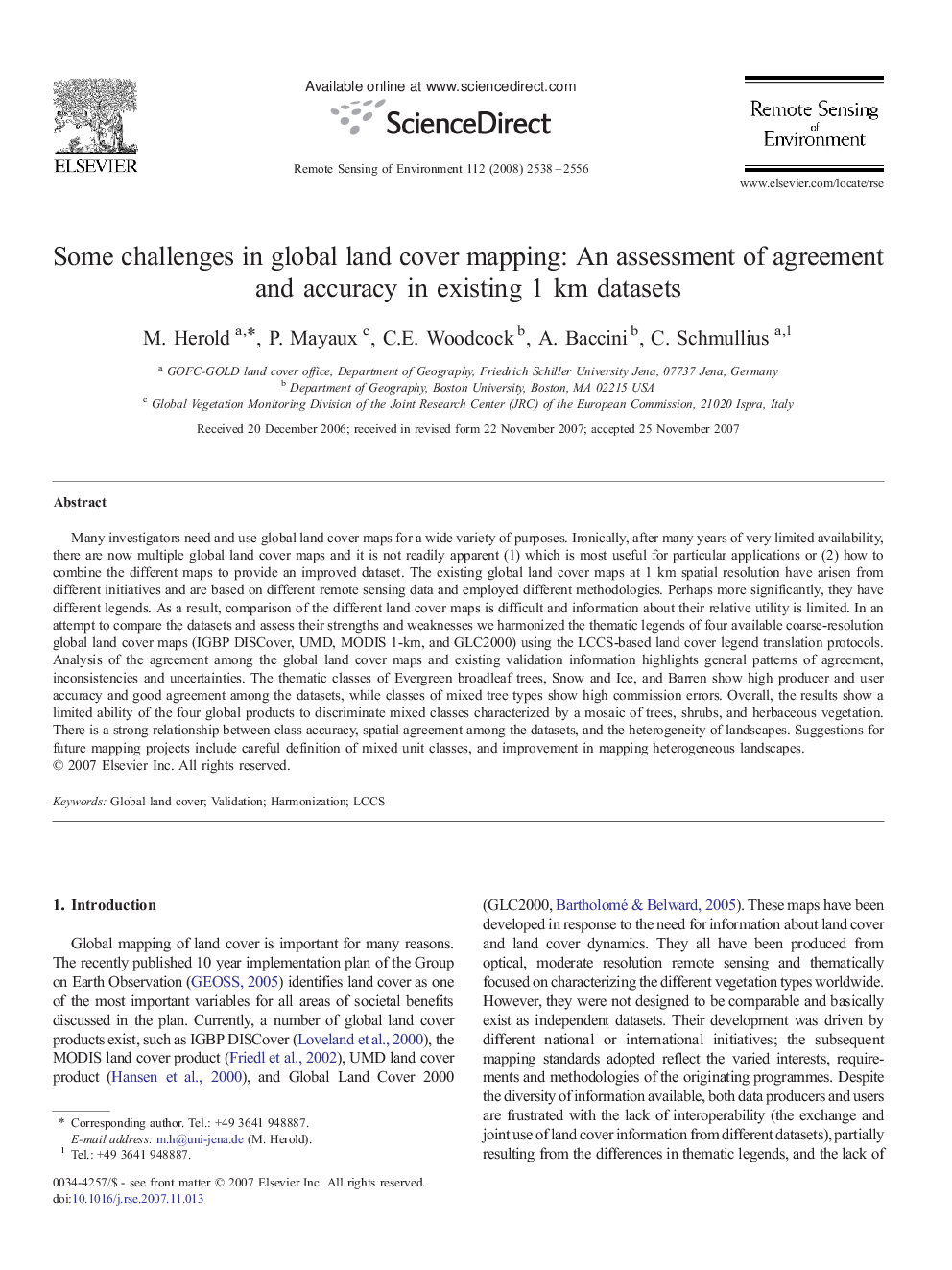| کد مقاله | کد نشریه | سال انتشار | مقاله انگلیسی | نسخه تمام متن |
|---|---|---|---|---|
| 4460616 | 1621329 | 2008 | 19 صفحه PDF | دانلود رایگان |

Many investigators need and use global land cover maps for a wide variety of purposes. Ironically, after many years of very limited availability, there are now multiple global land cover maps and it is not readily apparent (1) which is most useful for particular applications or (2) how to combine the different maps to provide an improved dataset. The existing global land cover maps at 1 km spatial resolution have arisen from different initiatives and are based on different remote sensing data and employed different methodologies. Perhaps more significantly, they have different legends. As a result, comparison of the different land cover maps is difficult and information about their relative utility is limited. In an attempt to compare the datasets and assess their strengths and weaknesses we harmonized the thematic legends of four available coarse-resolution global land cover maps (IGBP DISCover, UMD, MODIS 1-km, and GLC2000) using the LCCS-based land cover legend translation protocols. Analysis of the agreement among the global land cover maps and existing validation information highlights general patterns of agreement, inconsistencies and uncertainties. The thematic classes of Evergreen broadleaf trees, Snow and Ice, and Barren show high producer and user accuracy and good agreement among the datasets, while classes of mixed tree types show high commission errors. Overall, the results show a limited ability of the four global products to discriminate mixed classes characterized by a mosaic of trees, shrubs, and herbaceous vegetation. There is a strong relationship between class accuracy, spatial agreement among the datasets, and the heterogeneity of landscapes. Suggestions for future mapping projects include careful definition of mixed unit classes, and improvement in mapping heterogeneous landscapes.
Journal: Remote Sensing of Environment - Volume 112, Issue 5, 15 May 2008, Pages 2538–2556